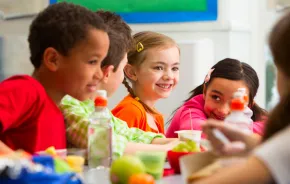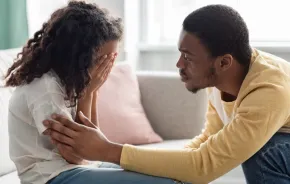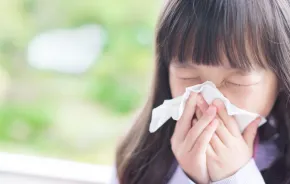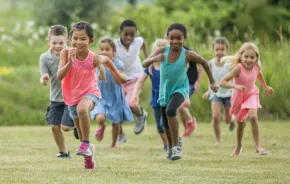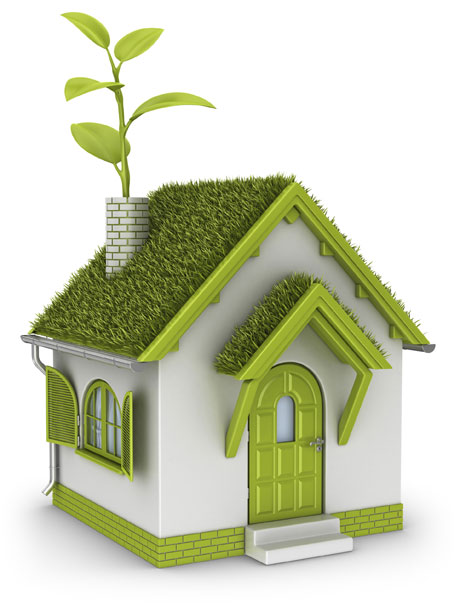 I’m a nester. I rearrange rooms in my spare time, fantasize about buying furniture I won’t be able to afford for at least 30 years (if ever), and spend weekends painting walls and messaging Etsy sellers about accessories.
I’m a nester. I rearrange rooms in my spare time, fantasize about buying furniture I won’t be able to afford for at least 30 years (if ever), and spend weekends painting walls and messaging Etsy sellers about accessories.
But the more I learn about the products, the more complicated being a nester becomes. Did that new crib come from a sustainably harvested forest? Is the engineered wood in the puppet theater glued together with formaldehyde? Is the paint in the kids’ room polluting the air?
My worries translate into my desires: I’m currently drooling over a $3,000 bunk bed made with sustainable wood from Maine and painted with milk paint. Yes, I’m that person.
I’m not the only consumer paying attention to the environment, and parents seem to be first in line to buy green. Maybe it’s because we pay more attention to health when it isn’t ours, but our children’s.
Maybe it’s because the future of the planet becomes more relevant once we’ve invested in the next generation. Regardless, if you are looking to create a green room — or even a green home — for your babies (of any age!), you can focus your thinking on two main challenges: the impact of your buying choices on the environment and the volatile organic chemicals (VOCs) that are emitted from the materials.
The first piece is more obvious. Choose recycled plastic, reclaimed wood, natural paints. Choose used over new, reusable over disposable. Choose minimal over extravagant.
The second piece is more complicated, and sometimes the two can contradict each other. Composite wood might kill fewer trees if the wood particles are a byproduct of something, but if it’s glued together with urea formaldehyde, the fumes (VOCs) can be toxic.
Why should you care about VOCs? According to the Environmental Protection Agency (EPA), short-term health effects of poor-quality indoor air include headaches, irritation of eyes, nose, and throat, and asthma. Because these effects are often similar to a cold, they are easy to overlook. Long-term effects include respiratory disease, heart disease and cancer. You can reduce VOCs that already exist in your home by opening windows often, dusting regularly, smoking outside and, as a NASA study suggests, with houseplants.
Radon is an indoor air pollutant that has nothing to do with what you buy, but is still worth checking out: It’s a leading cause of lung cancer. Radon comes from the ground and then gets stuck in our tightly insulated homes. Western Washington and Oregon have low levels in general, but the eastern parts of the states are in the middle range, and every home can differ. Luckily, you can test your own house and get a mitigation system fairly easily.
All about air
A good place to start if you are planning a major project such as a baby’s room is finding a green building supply company. Cameron Reith started Greenhome Solutions in Seattle with his brother and sister in 2008. “We grew up in building with our dad. My brother was a contractor, and I was in real estate, and we had trouble sourcing green products,” says Reith.
Greenhome’s customers include designers, builders and homeowners. When planning to create a green space in your house, Reith says, the first thing you should think about is indoor air quality. “That’s a huge concern, especially regarding children. You want to remove carpet and make sure there’s no added urea formaldehyde from engineered woods and flooring. Also, any kind of finish can be toxic: Look for air-quality certifications, which come with any kind of prefinished product.”
If you really want to get serious, he says, you can “dig down and read the MSDS sheets [material safety data sheets ] that describe ingredients and toxicology.” For flooring, good options include 100 percent wool carpet with a natural latex backing, says Reith. “Wool has a natural stain resistance because of the lanolin and will last 20–30 years, instead of 10.”
You can also find green carpet made from recycled plastic. This is better for the earth, although not necessarily for your indoor air, as the plastic will still emit VOCs, he says. Bamboo floors can be a good option — but be aware of what you’re getting.
“There’s a lot of bad bamboo out there with varying quality of adhesives, but you can get good-quality bamboo with a natural resin.”
Linoleum might be a surprising suggestion, but Reith says it’s usually made of wood flour, pine resin, linseed oil and limestone, so it can be a green product. Marmoleum is a popular type of linoleum that’s clean and natural.
Think about green insulation (wool or fiberglass without formaldehyde and with recycled glass), plumbing (low-flow and dual-flush toilets) and paint (VOC-free paint such as Mythic, YOLO Colorhouse and Safecoat). Milk paint, which is what it sounds like, is great also, especially for furniture and crafts. Reith cautions that while you can get a no-VOC, name-brand paint at a regular home store, VOCs are added as soon as you add the pigment for the color.
Green products can be more expensive, but, as Reith points out, you’re paying for quality. At his store, he says, “We get out and source products that are more affordable,” such as cheaper bamboo and cork flooring.
For Reith, a big piece of his business is letting people know they have options. “So many people walk in here and say they had no idea that any of this stuff even existed.”
Getting greener
Lillian Chen Zeidler recently added a green addition to her Ann Arbor, Mich. home in preparation for her first child. She used Styrofoam prefabricated walls to save on labor costs and energy bills. Styrofoam might not be an eco-friendly material, but it has eco-friendly benefits: Her home is 60 percent larger than it was before, but costs the same to heat.
Zeidler found she didn’t always love the green options she could find, so she compromised: a vinyl floor, because she liked the color, but zero-VOC paint and a low-flow toilet. For Zeidler and her husband, going green was “just part of our general lifestyle.” A less sustainable remodel didn’t occur to them.
I have similar goals and have made similar compromises. When my first son outgrew his crib, we found organic mattresses to be too expensive and bought a used regular one, because VOCs are thought to decrease over time. (Used is also a more sustainable option for the planet.) We topped it with an organic wool topper and organic sheets. When we remodeled a whole bedroom, we chose the cheaper vinyl windows, but painted the walls with Safecoat and added peace lilies to the room to help clean the air.
Of course, after you create a green nursery or playroom, you have to keep it that way. And that’s often the hard part, because it’s tempting to haul out the bleach after the playdate with a runny-nosed neighbor. With houses insulated tighter than ever and more cleaning chemicals on the market, our indoor air is usually much more toxic than outdoors. And if your kids are staying inside in the winter, their exposure increases.
One Seattle group trying to keep homes eco-friendly is Maven Maids, founded in 2004 after Karen Cirulli and Stephanie Abram were inspired by the book Clean House, Clean Planet by Karen Logan. They found the book in the middle of a cross-country move and spent the rest of the trip planning their new business.
Kevin Cirulli, proprietor at Maven Maids, says organic cleaning products are important because few chemicals in cleaning agents are regulated by the EPA, and of those that are, “there’s little known about their long-term effects. Chemical cleaners kill everything in their path including skin cells and lung tissue.” Maven Maids makes all of its products and uses ingredients such as tea tree oil, Castile soaps, vinegar, baking soda and eucalyptus oil.
Even if you don’t want to make your own products, there are many green cleaning agents in the stores. But not all green is created equal. Cirulli suggests looking for products that have simple ingredient lists. Green products sometimes require more “elbow grease,” but the benefits are huge, he says.
It’s a lot to think about, but creating green spaces for your children boils down to two questions: Is this good for the earth? Is this good for my kids? If I’m not sure, I ask myself this, instead: Can I list the ingredients without spell-check? Could this have been made 1,000 years ago? If the answers are yes, then it’s likely you’re on the right track.
Wendy Lawrence blogs at TheFamilyThatReadsTogether She’s a writer and mom who shares her eco-friendly home in Ann Arbor, Mich., with her husband and two sons.
Resources
The Old Fashioned Milk Paint Co.
milk paint
Life Without Plastic
toys, infant and kid dishes, lunch boxes, kitchen items
One Earth One Design
building supply, furniture
NuBe Green
furniture and accessories for the home and kids
Gaiam
home accessories, bedding, cleaning products, clothing
Planet Happy Toys
organic toys
Holy Lamb Organics
organic crib mattresses, bedding, nursing pillows, comforters








